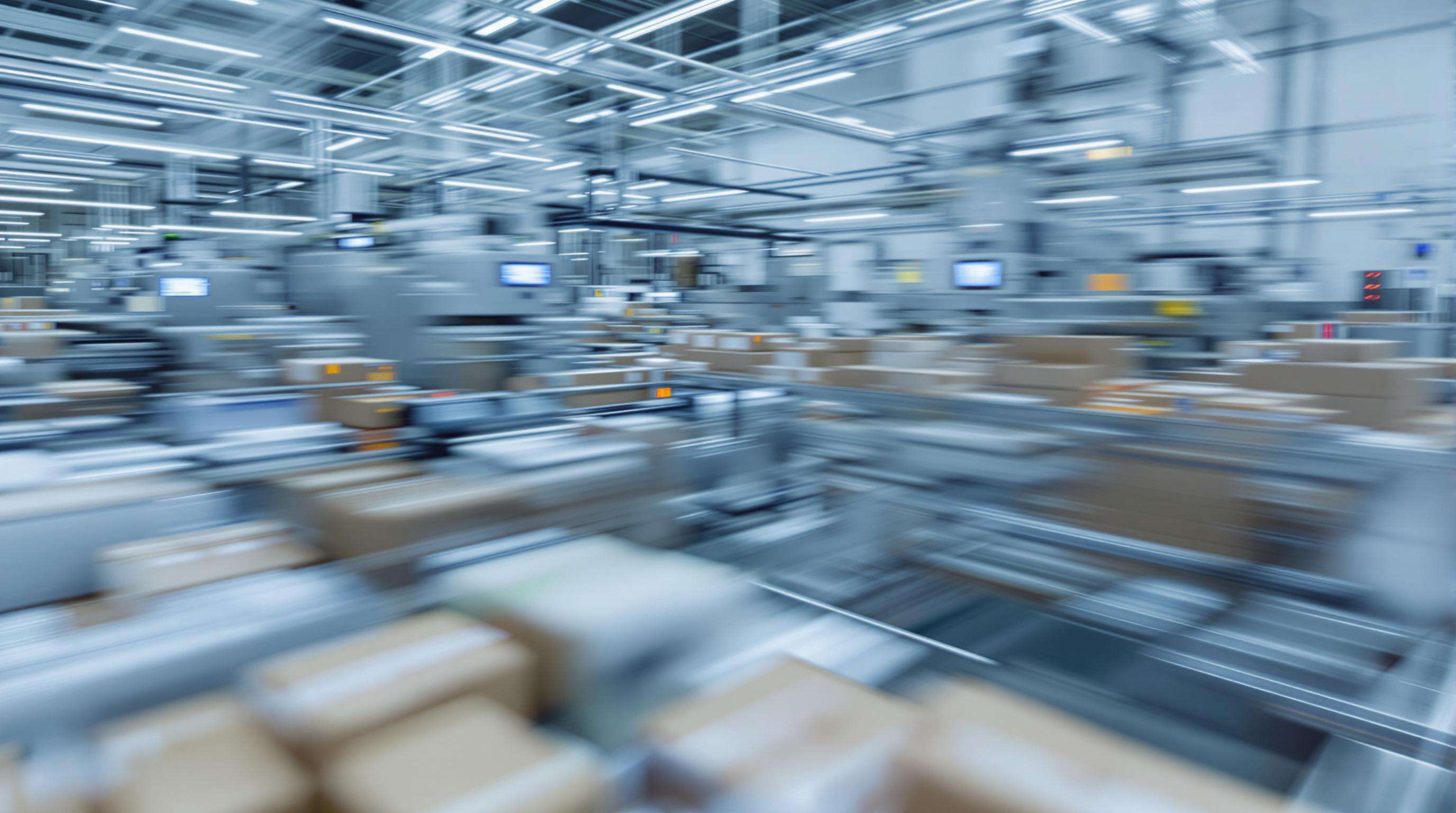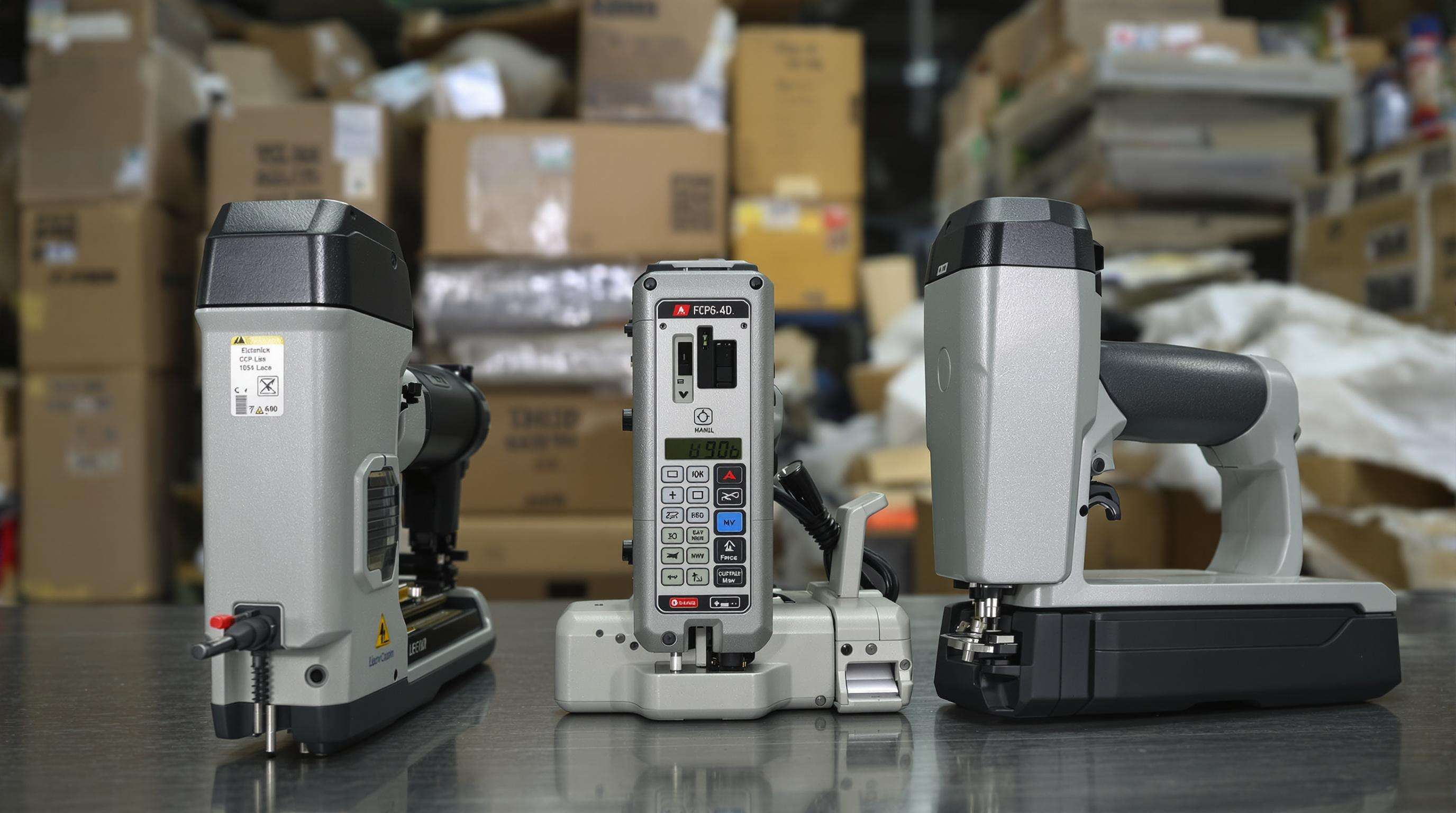How to Choose the Right Staple Machine for High-Volume Production Needs
Understanding Stapling Capacity and Production Throughput

What Is Stapling Capacity and Why It Matters
The stapling capacity basically means how many staples a machine can push through each minute when everything works just right. For companies running large scale operations, this number really matters because it affects how smooth things run. Take machines that handle around 1200 staples every minute for instance they end up processing about seventy two thousand items an hour. Slower versions tend to hold things back though and create those annoying production snags we all hate. A recent look at packaging efficiency data from 2023 showed something interesting too roughly forty three percent of unexpected stoppages on factory floors come down to machines simply not keeping up with what's needed speed wise.
Matching Stapling Speed and Volume to Daily Output Goals
To align stapler performance with production targets:
- Calculate baseline needs: A facility requiring 500,000 cartons/day needs a machine maintaining 694 staples/minute over an 8-hour shift.
- Add 15–20% overhead to accommodate surge demands or material variations like corrugated vs. thin cardboard.
Leading manufacturers use OEE (Overall Equipment Effectiveness) to balance speed, availability, and quality, aiming for 85% or higher in high-output environments.
Industry Standards for Carton/Package Closing Stapler Performance
Key benchmarks for industrial-grade staplers include:
- Cycle consistency: ≤1% misfire rate at maximum speed (ISTA 6-FEDEX 2024)
- Uptime: 95% operational reliability over 1,000 hours (ANSI/PMHI SS-4 certification)
- Energy efficiency: ≤0.35 kWh per 10,000 staples (Energy Star Industrial 2023)
Case Study: Reducing Downtime with High-Capacity Staple Machines
A Midwest packaging plant reduced unplanned stops by 37% after upgrading to servo-driven staplers with real-time jam detection. Over six months, the $28,000 investment lowered maintenance costs by $5,200/month and increased daily output from 380,000 to 510,000 units—a 34% productivity gain validated by third-party throughput audits.
Power Options and Adjustability in Industrial Staple Machines

Industrial environments demand precise control over stapling power and flexibility to handle diverse materials. Modern staple machines offer three primary power configurations to meet these needs:
Electric vs. Manual Packing Stapler Power Output
Electric models deliver 30% faster stapling speeds than manual alternatives (Industrial Packaging Journal, 2023), making them ideal for operations exceeding 2,000 staples per shift. Manual staplers remain suitable for low-volume tasks or facilities prioritizing upfront cost savings over long-term productivity.
Cordless Staple Machines: Eliminating Air Compressors Without Sacrificing Power
Advanced lithium-ion batteries now power cordless models capable of driving 18-gauge staples through double-walled corrugated materials—matching pneumatic tool performance. Facilities using cordless systems report a 41% reduction in maintenance costs by eliminating air compressor upkeep (2024 Material Handling Efficiency Study).
Adjustable Depth and Force Settings for Variable Packaging Materials
| Material Type | Recommended Force | Depth Setting |
|---|---|---|
| Thin Cardboard | Medium (4-6 bars) | 2-3 mm |
| Triple-Wall Corrugated | High (8-10 bars) | 5-7 mm |
| Foam Inserts | Low (2-3 bars) | 1-2 mm |
Operators benefit from machines with 10+ force presets and tool-less depth adjustments to manage mixed-material workflows efficiently. A 2023 equipment survey found such models reduced material waste by 27% compared to fixed-setting alternatives.
Selecting the Right Staple Gun Type for Your Production Environment
Carton/Package Closing Stapler vs. Construction and Flooring Staplers
Staple guns used in industry basically come in two main types. There are those made specifically for sealing boxes on fast moving production lines, and then there are the heavy duty versions meant for attaching things like flooring or wall panels. The box closing models really focus on going super fast sometimes hitting around 1200 staples per minute while also being comfortable enough so workers don't get sore after hours of use. On the other hand, construction grade staplers pack way more punch they can drive staples into tough stuff like composite boards or thick roofing material because they generate between 45 and 60 pounds per square inch of force. Some recent research from early 2024 showed warehouses that switched from old construction staplers to proper box closing models saw their jam problems cut down by almost half. Makes sense when you think about it these specialized tools just work better for what they're intended.
Tool Type Suitability Across Manufacturing and Packaging Sectors
| Sector | Typical Application | Key Stapler Features |
|---|---|---|
| E-commerce Packaging | Corrugated box sealing | High-speed, low-maintenance |
| Furniture Assembly | Upholstery/fabric attachment | Adjustable depth, narrow nose |
| Construction | Subfloor/insulation install | Pneumatic power, 1.5"+ staples |
Manufacturers handling mixed materials may use hybrid setups—automated lines often pair carton closers with secondary tools for rigid plastic banding. Match staple crown width and leg length to your primary materials: #6 staples (±-“ crown) work well for lightweight boxes, while ½“ heavy-gauge staples secure wooden pallets.
Durability, Maintenance, and Long-Term Reliability
Industrial staple machines in high-volume production must be built to last. A 2024 Material Durability Study found that 78% of equipment failures result from poor material selection in high-stress components. For operations exceeding 20,000 cycles daily, steel-frame construction with tungsten-carbide jaws is essential.
Material Build Quality and Expected Lifespan of Industrial Staplers
Premium alloys in drive mechanisms and anvil plates significantly extend machine life. Pneumatic models with aircraft-grade aluminum housings demonstrate 40% longer service lives than standard steel variants in packaging trials. Critical wear surfaces should undergo laser hardening (55–60 HRC) to resist deformation from repeated impacts.
Common Wear Points and Preventive Maintenance Best Practices
Maintenance records show that around 92% of unexpected equipment stops come from issues with three main parts: the staple chamber, driver blade, and magazine spring. To catch problems early, technicians should check these components every two weeks with proper wear measuring tools. When it comes to keeping things running smoothly, how we apply lubricant is actually more important than how often we do it. Using synthetic oil mixed with those special EP additives and applying them through fine needle applicators makes a big difference. Field tests indicate this approach cuts down on friction related breakdowns by about 63%, which is way better than just spraying on regular grease.
Buying Guide: Key Features and Total Cost of Ownership
Must-Have Features in a High-Output Staple Machine
Prioritize models with industrial-grade motors (minimum 4,500 staples/hour capacity) and jam-resistant mechanisms to maintain continuous operation. Features like instant reload indicators and standardized staple compatibility reduce changeover time by 22% in high-volume settings (Packaging Operations Review 2023).
Evaluating Supplier Reliability and Warranty Support
Choose suppliers offering at least 3-year maintenance contracts covering wear components such as driver blades and anvils. A 2023 industry survey showed manufacturers with 24/7 technical support reduced unplanned downtime by 34% compared to those relying on basic warranty coverage. Cross-reference ISO 9001 certifications with client testimonials to verify service quality.
Calculating Total Cost of Ownership Beyond Purchase Price
Consider energy use (electric models average $740 annually vs. $120 for pneumatic), staple consumption (18–22 gauge), and productivity losses from misfires (averaging 12 minutes/hour downtime at a 25% malfunction rate). As shown in total cost of ownership analysis, operational and maintenance expenses typically exceed initial equipment costs by 300% over five years.
FAQ
What is the importance of stapling capacity in industrial production?
Stapling capacity is crucial because it determines how many items a machine can process each minute, influencing overall production efficiency and throughput.
How can companies align stapling speed with production targets?
Companies can calculate baseline needs, add overhead for surge demands, and use Overall Equipment Effectiveness (OEE) to ensure efficient speed, availability, and quality.
What are the benefits of electric vs. manual industrial staplers?
Electric staplers offer faster stapling speeds and are ideal for high-volume operations, while manual staplers are suitable for low-volume tasks due to their cost-effectiveness.
Why are cordless staplers beneficial in industrial settings?
Cordless staplers eliminate the need for air compressors, reducing maintenance costs while maintaining powerful stapling capability.
How does material type influence stapling settings?
Each material type requires specific force and depth settings to ensure efficient stapling without damaging either the material or machine.
 EN
EN
 AR
AR
 BG
BG
 CS
CS
 FI
FI
 FR
FR
 DE
DE
 EL
EL
 HI
HI
 IT
IT
 JA
JA
 KO
KO
 PL
PL
 PT
PT
 RU
RU
 ES
ES
 TL
TL
 ID
ID
 LT
LT
 SR
SR
 UK
UK
 VI
VI
 SQ
SQ
 GL
GL
 HU
HU
 MT
MT
 TH
TH
 TR
TR
 AF
AF
 MS
MS
 AZ
AZ
 KA
KA
 BN
BN
 LO
LO
 LA
LA
 MI
MI
 MN
MN
 NE
NE
 KK
KK
 UZ
UZ

